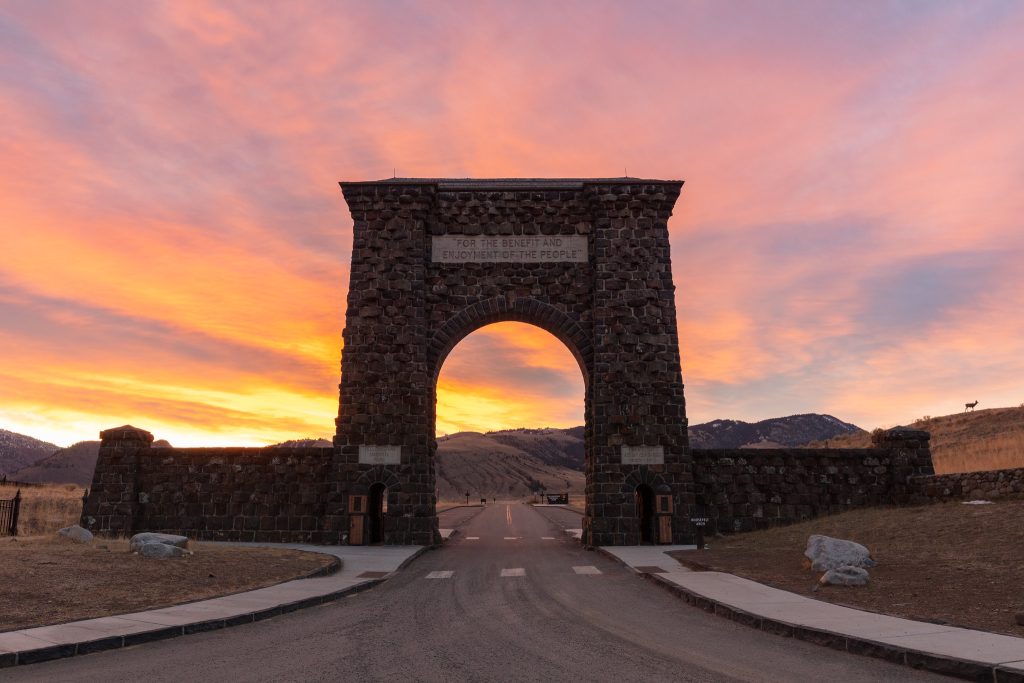Continuing a 71-year tradition, the leaders of Yellowstone and Grand Teton National Parks had meetings and meals with the local leaders and state & federal representatives in Cody for the annual National Park’s Day in Yellowstone’s East Entrance gateway community.
Yellowstone Superintendent Cam Sholly was joined by his 20-year colleague and compatriot Grand Teton Superintendent Chip Jenkins. After lunch, both superintendents gave presentations on their parks and the prognosis for Summer 2023.
In short, both Sholly and Jenkins anticipate an “outstanding” year for both of Wyoming’s national parks, welcoming news for all five gateway communities: Cody, Jackson, West Yellowstone, Gardiner, Cooke City, and Silver Gate.
Any assessment of the potential of 2023 starts with reviewing the challenges and accomplishments of 2022. So, naturally, Sholly took time to review the disastrous events that opened Summer 2022 and the incredible work that saved the season.
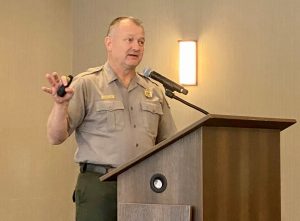
Sholly reiterated his key takeaway from what made the closure, reconstruction, and reopening of the North and Northeast Entrance roads – the importance of establishing essential relationships before you need them.
When a 1-in-500-year flood destroyed significant sections of the roads to the North and Northeast Entrances in June 2022, uncertainty and pessimism gripped all five gateway communities.
The overwhelming support of the States of Wyoming and Montana, the National Park Service, the Federal Highway Administration, the Department of the Interior, and Interior Secretary Deb Haaland provided the logistical and financial support to undertake emergency construction projects undertaken by “world-class” contractors HK Contractors & Oftedal Construction. These essential relationships allowed both entrances to reopen by the end of October 2022.
Grand Teton Superintendent Jenkins calls this effort, in addition to the day-to-day management of one of the most popular national parks, “a stunning level of leadership” shown by Sholly and the Yellowstone team. It’s the kind of praise for his own effort that Sholly usually redirects with sincere modesty.
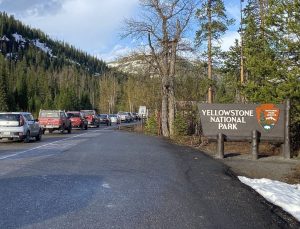
While Sholly lauds the effort that built the North Entrance Road from a single-land dirt road in June to a two-lane, paved road with next-to-no weight or length restrictions in four months, he indicated that this will likely not be the permanent solution.
“We were fortunate to get a significant amount of money from Congress and the (Biden) Administration for long-term, permanent repairs -$750-900 million. Once we decide where the permanent road is going to go, we have the money to execute the project. We want to make sure we get it right.”
Sholly also addressed issues like visitor management, which has become a topic of discussion for many national parks. An immense traffic slowdown for a bear sighting might dominate media coverage and annoy Yellowstone employees, locals, and repeat visitors. But for first-time visitors on a bucket-list trip (which make up 70% of Yellowstone’s annual visits), that slowdown is part of the experience.
Meanwhile, another possible visitor management solution is the driverless shuttles tested at Canyon Village in 2021Twowo shuttles with ten seats each carried more than 10,000 people one season e – a modest success.
However, implementing a park-wide shuttle system might cost up to $50-70 million in investment, several new 600+ spot parking lots, and, Sholly fears, could potentially crash Cody’s economy from a tourism standpoint.
“People simply aren’t going to drive to Pahaska Teepe, park at a parking lot, do a 200-mile roundtrip in the park, come back to their car, come back to Cody.”
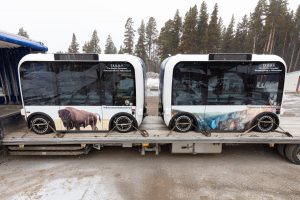
Figuring out the issues and implications of any decision, then balancing it to best fit the need of the park and the gateway communities is a complex process. But it’s the best way to ensure an economically equitable future.
“Visitor management is not a one-size-fits-all issue. What works in Grand Teton or Zion or Glacier isn’t necessarily going to work in Yellowstone. At some point, we’re going to need to do something more aggressive. But we’re not there now,” Sholly said.
Jenkins shared similar sentiments, adding that Grand Teton National Park is simultaneously in harmony with Yellowstone while also being its own entity.
For instance, Jenkins shared that a recent study of visitor patterns in Grand Teton showed no pattern. Despite the millions of tourists, there is not a defined travel pattern for how visitors go through the park. Most visitors are so overwhelmed by the view. They’re looking for the first stop to pull over and take it in.
Furthermore, only 5% of annual visitors to “America’s Park” are locals. California and Texas together make up 20% of annual visitation.
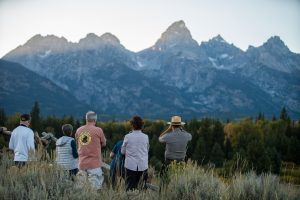
Jenkins says learning from the struggles of the past several years (2020-2023) is an ongoing conversation in Yellowstone and Grand Teton. And in his view, these years are “an amazing gift” that could make the future of both parks more manageable, regardless of what happens.
“We have lived what the future might be. We have experienced what the future might be. We have an opportunity to be doing research, to be having conversations, to be thinking about what worked for us well and what didn’t work for us well.”
Sholly and Jenkins ended their presentations by thanking Cody’s leaders, businesses, and residents for their unwavering support. Despite everything, communication, support, and patience have allowed both parks to thrive amidst unprecedented events. But everyone’s hoping there’s a prosperous break this year.
“It’s a true team effort, and we appreciate everything that you do for us and look forward to working closely in the future – and hope that we have a summer that’s not marred by some catastrophe,” Sholly said.


